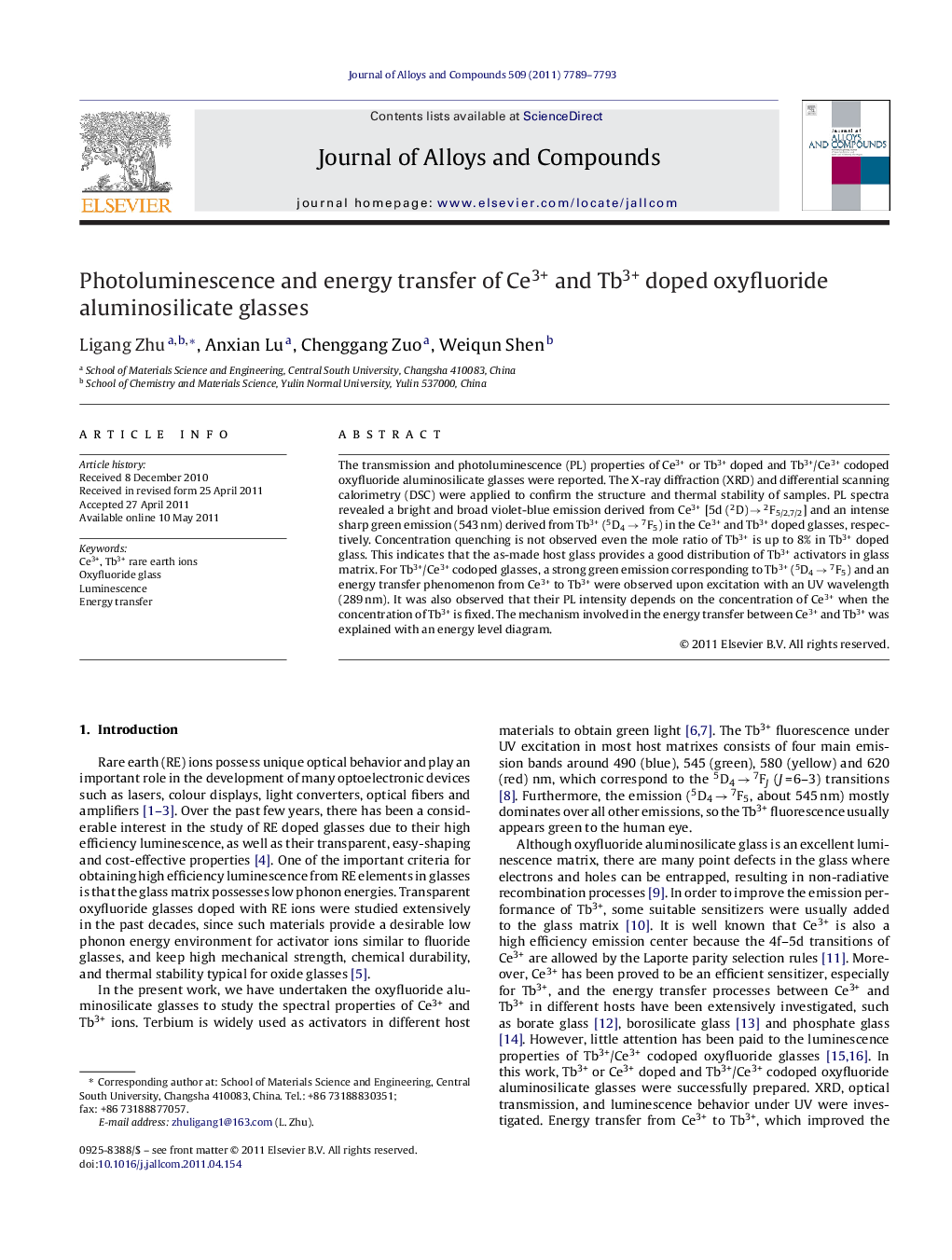| Article ID | Journal | Published Year | Pages | File Type |
|---|---|---|---|---|
| 1617318 | Journal of Alloys and Compounds | 2011 | 5 Pages |
The transmission and photoluminescence (PL) properties of Ce3+ or Tb3+ doped and Tb3+/Ce3+ codoped oxyfluoride aluminosilicate glasses were reported. The X-ray diffraction (XRD) and differential scanning calorimetry (DSC) were applied to confirm the structure and thermal stability of samples. PL spectra revealed a bright and broad violet-blue emission derived from Ce3+ [5d (2D) → 2F5/2,7/2] and an intense sharp green emission (543 nm) derived from Tb3+ (5D4 → 7F5) in the Ce3+ and Tb3+ doped glasses, respectively. Concentration quenching is not observed even the mole ratio of Tb3+ is up to 8% in Tb3+ doped glass. This indicates that the as-made host glass provides a good distribution of Tb3+ activators in glass matrix. For Tb3+/Ce3+ codoped glasses, a strong green emission corresponding to Tb3+ (5D4 → 7F5) and an energy transfer phenomenon from Ce3+ to Tb3+ were observed upon excitation with an UV wavelength (289 nm). It was also observed that their PL intensity depends on the concentration of Ce3+ when the concentration of Tb3+ is fixed. The mechanism involved in the energy transfer between Ce3+ and Tb3+ was explained with an energy level diagram.
► Oxyfluoride glasses possess excellent optical properties like fluoride glasses and good mechanical, chemical features such as oxide glasses. ► The formation of Ce4+ ions was efficient depressed by employing a reducing atmosphere with Sb2O3. ► The host glass provides a good distribution of Tb3+ activators in glass matrix. ► Enhanced green emission (5D4 → 7F5) from Tb3+/Ce3+ codoped glasses proves an efficient energy transfer between Ce3+ and Tb3+ ions.
